Table of Contents
Introduction: What Do Peppercorns Look Like?
When you search for "what do peppercorns look like," you're looking for clear visual descriptions of these common spices. Peppercorns are dried berries from the Piper nigrum plant, and their appearance varies significantly depending on the type and processing method. This guide provides detailed visual descriptions and comparisons to help you identify different peppercorn varieties by their appearance alone.
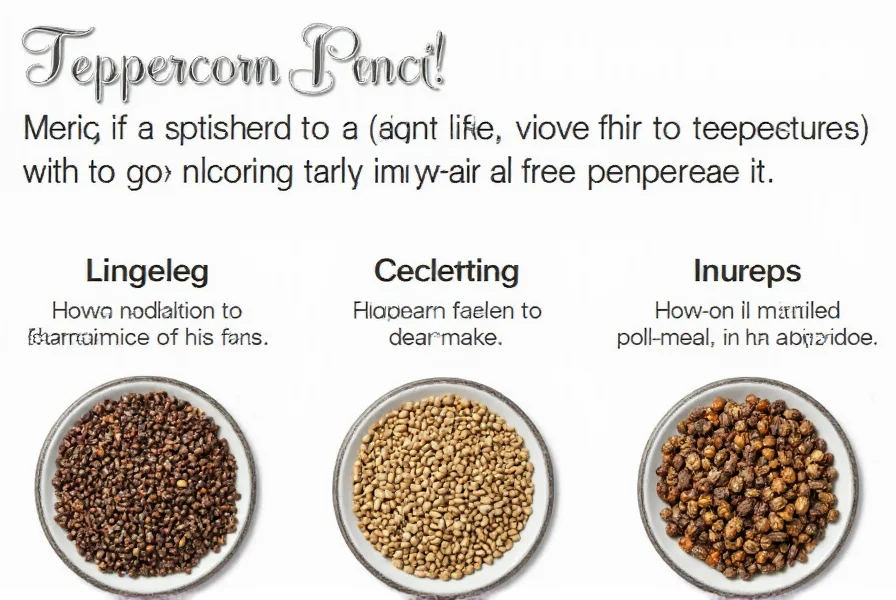
Peppercorn Basics: Appearance Characteristics
Peppercorns are small, round berries that grow in clusters on the Piper nigrum vine. Their size typically ranges from 3-5mm in diameter. The appearance changes dramatically based on harvest time and processing:
- Size: Approximately the size of a small pea or poppy seed
- Shape: Generally spherical with slight irregularities
- Surface texture: Varies from smooth to heavily wrinkled depending on type
- Color: Ranges from bright green to deep black, with white and red varieties also existing
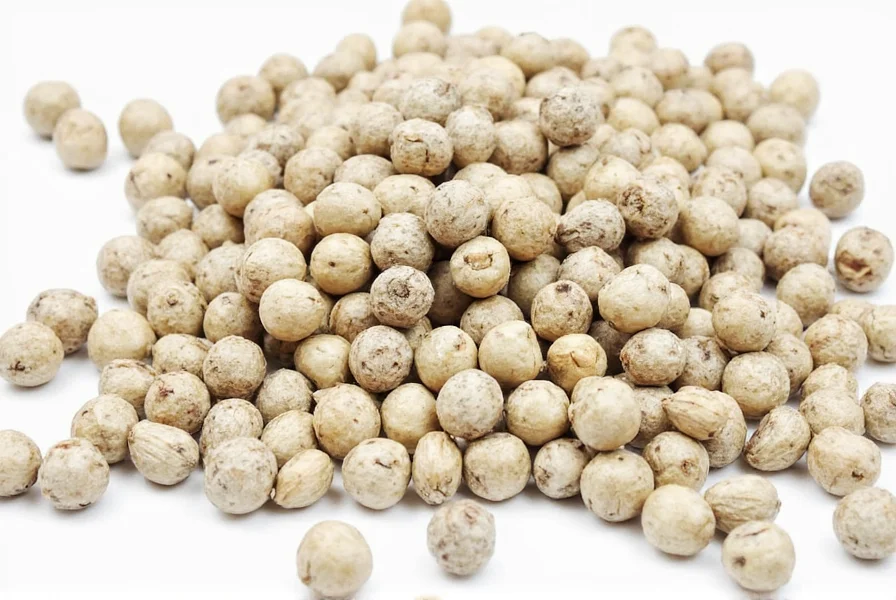
Types of Peppercorns: Visual Comparison
| Peppercorn Type | Color | Surface Texture | Size Characteristics | Shape Features |
|---|---|---|---|---|
| Black Peppercorns | Dark brown to black | Heavily wrinkled, rough surface | 3-5mm diameter | Generally spherical with noticeable creases |
| White Peppercorns | Pale beige to white | Smooth, polished surface | 3-4mm diameter | More uniform spherical shape without wrinkles |
| Green Peppercorns | Bright green | Smooth to slightly wrinkled | 3-5mm diameter | Plump and rounded with minimal creasing |
| Red Peppercorns | Vibrant red to dark burgundy | Smooth with slight wrinkles | 4-6mm diameter | Rounder and slightly larger than other types |
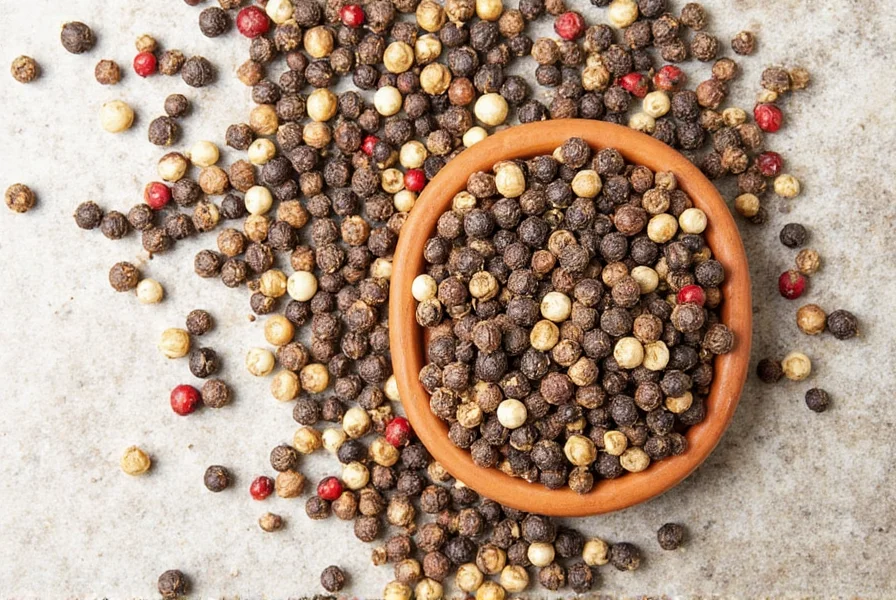
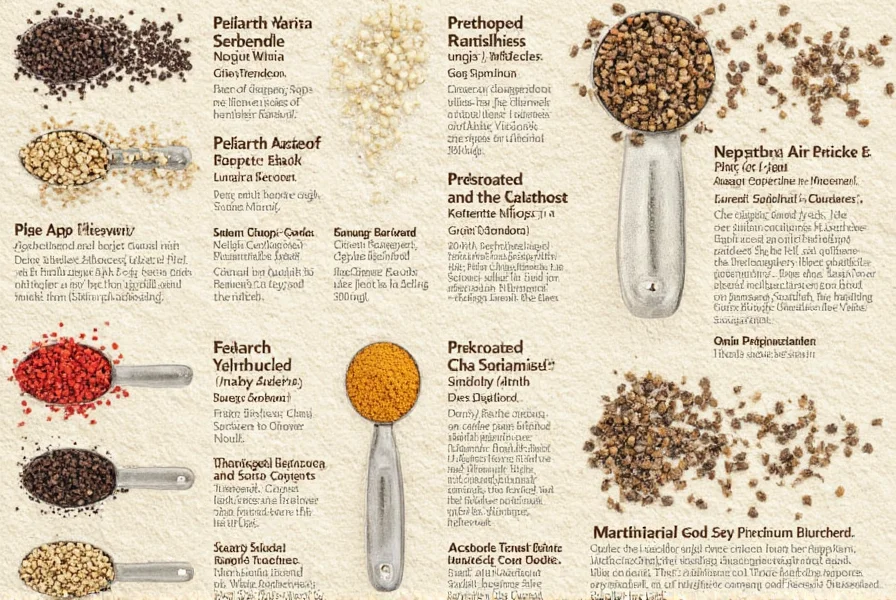
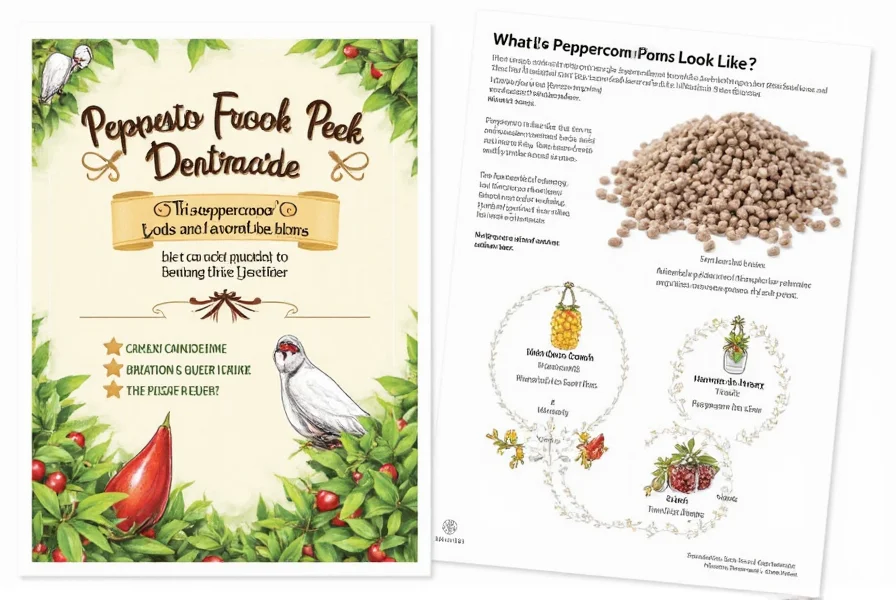
How to Identify Different Peppercorns by Appearance
- Black peppercorns: Look for dark brown to black color with deep wrinkles. They should feel hard and dry to the touch. The wrinkles are most noticeable when viewed under good lighting.
- White peppercorns: These appear pale beige or white with a smooth, almost polished surface. They lack the wrinkles of black peppercorns and have a more uniform appearance.
- Green peppercorns: Bright green color with a plump, slightly wrinkled surface. They're often sold preserved in brine or salt, which gives them a moist appearance.
- Red peppercorns: Vibrant red color that can range from bright red to deep burgundy. They're larger than other types and have a smooth surface with minimal wrinkling.
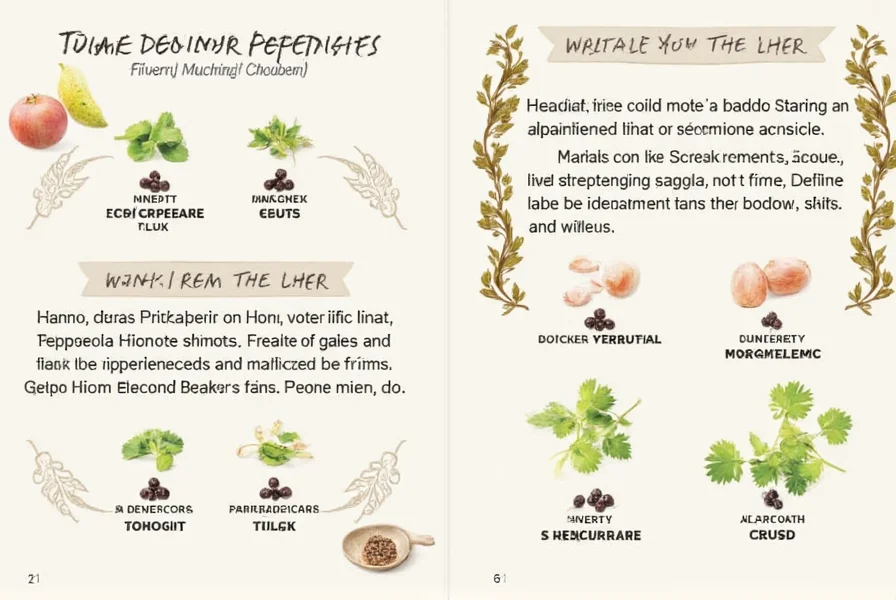
Frequently Asked Questions About Peppercorn Appearance
What do peppercorns look like when they're fresh on the vine?
When fresh on the vine, peppercorns appear as small green berries growing in clusters. They're smooth, plump, and bright green, similar to tiny grapes. As they ripen, they gradually change color from green to yellow, then orange, and finally red when fully mature.
How can you tell the difference between black, white, green and red peppercorns by appearance alone?
Black peppercorns are dark brown to black with deep wrinkles. White peppercorns are pale beige to white with smooth surfaces. Green peppercorns are bright green and plump, often appearing moist. Red peppercorns are vibrant red and larger than other types. The surface texture and color differences are the most reliable visual identifiers.
Why do black peppercorns look wrinkled while white ones are smooth?
Black peppercorns are harvested when still unripe (green) and then sun-dried. During drying, the outer layer shrinks and wrinkles. White peppercorns are made by soaking black peppercorns in water to remove the outer layer, leaving only the smooth inner seed.
How can you identify high-quality peppercorns by appearance?
High-quality peppercorns should have uniform color for their type, consistent size, and no visible mold or discoloration. Black peppercorns should be dark with deep wrinkles, white should be smooth and pale without yellowing, green should be bright without browning, and red should be vibrant without fading. They should feel hard when squeezed and have no signs of moisture or stickiness.

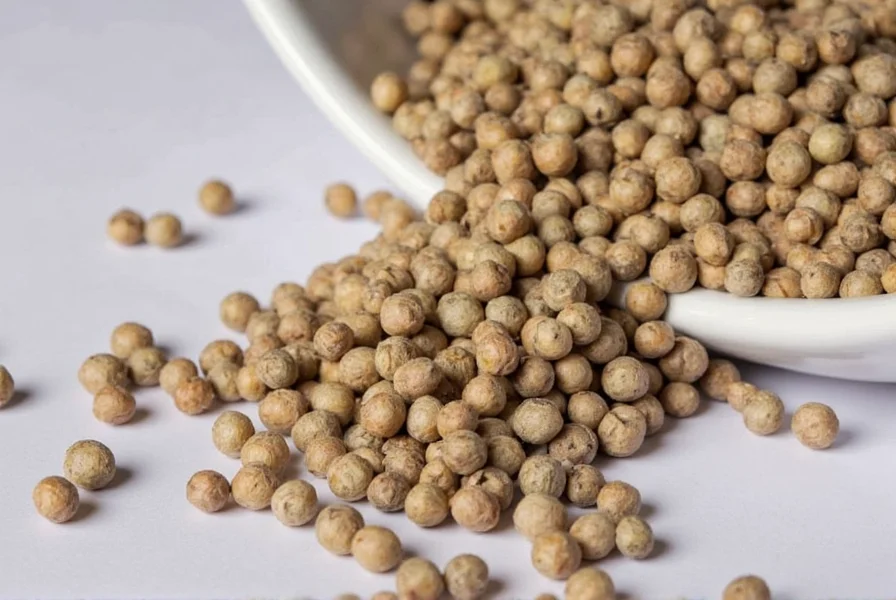









 浙公网安备
33010002000092号
浙公网安备
33010002000092号 浙B2-20120091-4
浙B2-20120091-4